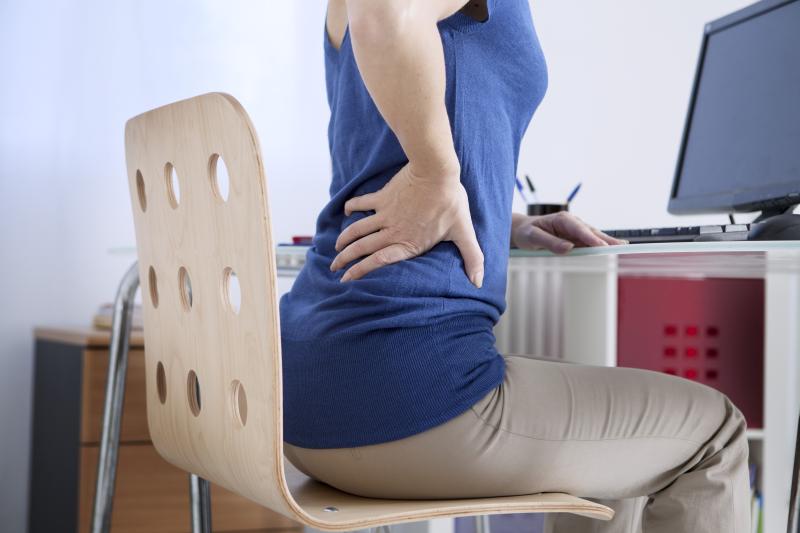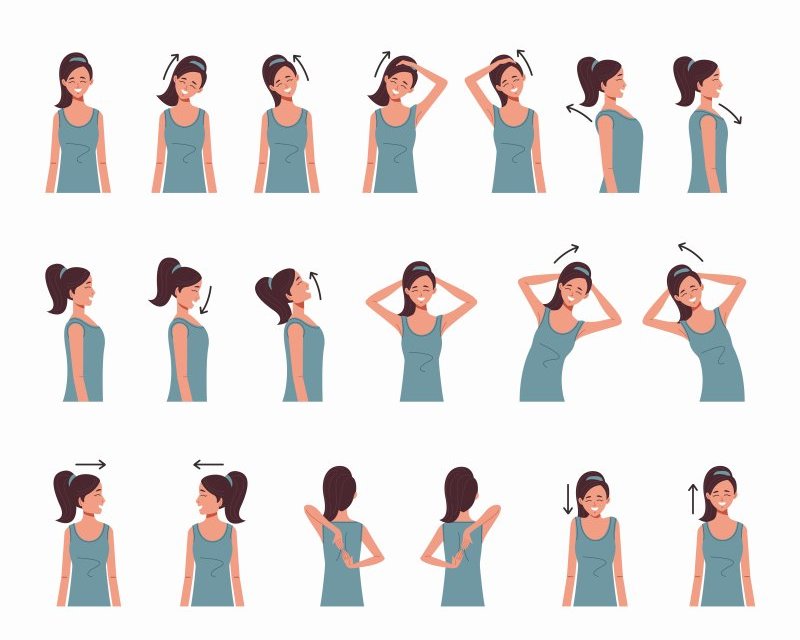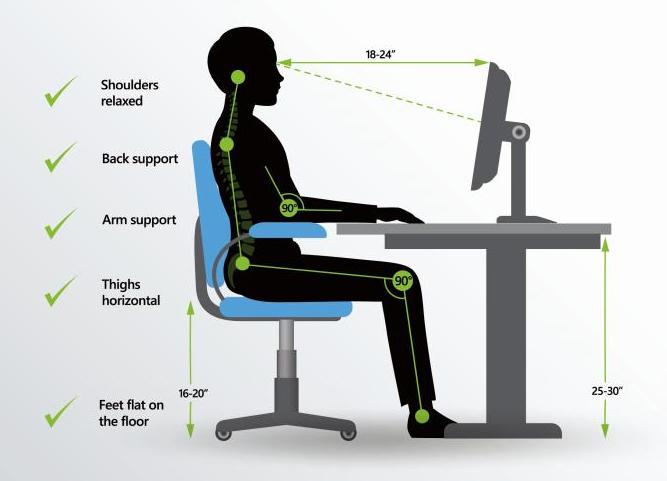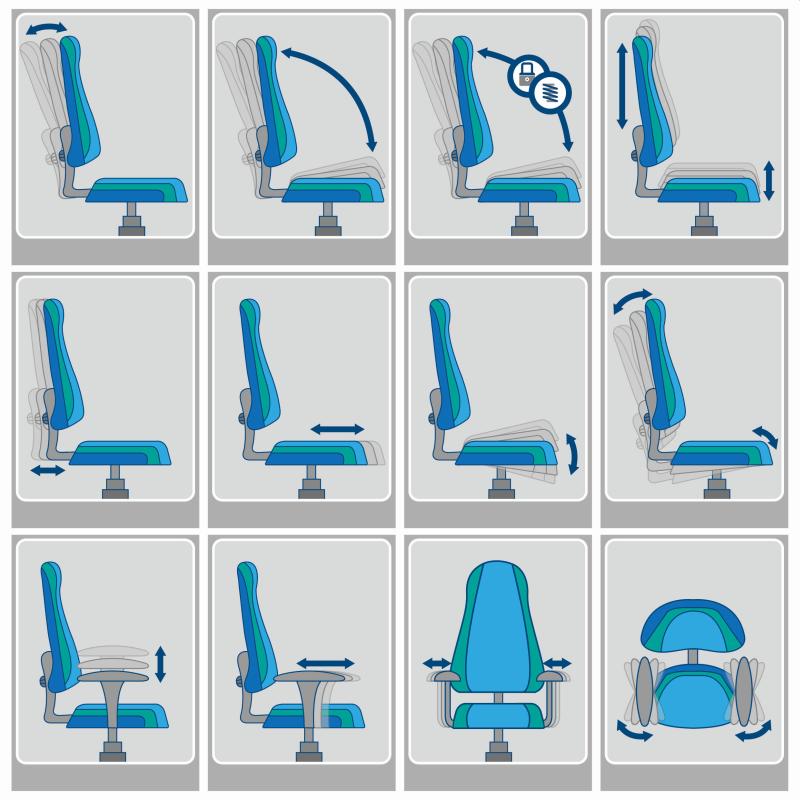Is there such a thing as sitting too much? Have you ever imagined yourself attending an all-day-long seminar or meeting, and sitting done for many hours in an uncomfortable stacking chair? How did you feel by the end of the day? Where did this exhaustion come from?
At work, many of us spend over 7 hours sitting down each day. Sitting, a seemingly benign activity can have short-term and long-term effects on your health and body, making it potentially deadly. Table of contents:
- What Are the Symptoms of Sitting Too Much
- How to Prevent Sciatica and Hip and Back Pain
- 3 Guidelines for Choosing A Good Ergonomic Chairs
- Why Tech & Q is the Best Option For You
What Are the Symptoms of Sitting Too Much and Even More Than 8 Hours?
Despite office work being one of the safest jobs you can do, it’s also known today for its own host of health issues contributing to the rising numbers of workplace injuries.
“Sitting disease” is a term recently coined as new research suggests that sitting for long periods of time without adequate movement and spine alignment can lead to several long-term health conditions, including musculoskeletal disorders.
Several studies have looked at office worker habits over the years, and many have found strong correlations between sitting at a desk and chronic back pain.

Research has also found that regardless of how much you exercise, sitting can still put you at risk of disease and chronic pain. There are several reasons why desk work causes musculoskeletal symptoms, including:
- Slouching occurs the longer you stay seated, keeping your spine misaligned
- Poor workstation set-up causes neck-straining if computer monitors aren’t at eye level
- Bad habits like crossing your ankles and legs cause hip misalignment
- Lack of movement restricts blood and nutrient flow to spinal discs
- Continuous sitting increases wear and tear on your spinal discs
How to Prevent Sciatica and Hip and Back Pain?
Hunching over a keyboard is all too easy when sitting for prolonged periods. However, bad office chair posture can cause some devastating and long-lasting side effects including pain in the neck, back, knees, and hips, and poor circulation.
It is possible to undo these potential issues with correct sitting posture, enough exercise, and a supportive office chair. If you’re wondering how to improve posture while at your desk, consider the following best practices:
- Posture Exercises
- Get a Supportive Chair
- Sitting Properly in Your Chair
Posture Exercises
Studies recommend moving for short periods every 30 minutes or so when sitting for extended intervals to increase blood flow and re-energize the body. In addition to taking brief breaks at work, here are a few exercises to try after work to improve your posture:

Taking a simple 60-minute power walk can help counteract the negative effects of prolonged sitting and engage the muscles needed for good posture.

Basic yoga poses can do wonders for the body.
Yoga exercises encourage proper alignment by stretching and strengthening the muscles such as those in the back, neck, and hips that get tense when sitting.

Shoulder tightness and neck pain are common amongst office workers.
Luckily, simple stretch exercises such as rolling your shoulders backward or forwards in a circular motion, or tilting your neck to the left or right side and hold there, can quickly loosen up these strained muscles.
Do these simple exercises three to six times per week to relieve the pain.
Get a Supportive chair
The best chairs for good posture should be supportive, comfortable, adjustable, and durable. Therefore, you should be looking for the following features in your office chair:
- A backrest that supports your upper and lower back, adhering to the natural curve of your spine
- Ability to adjust the seat height, armrest height, and the backrest’s reclining angle
- Supportive headrest
- Comfortable padding on the back and seat
- Ergonomically designed supportive chairs that encourage proper body alignment to improve posture, reduce pain and increase productivity
Sit Properly in Your Chair
A poor posture like slumped shoulders, protruding neck, and curved spine is the main culprit of physical pain that many office workers experience. It is crucial to be mindful of the importance of good posture in office chair throughout the workday.
Aside from reducing pain and improving physical health, a good posture in office chair also can boost your mood and self-confidence making you all-around more successful at your job.

Here are a few tips for how to sit properly in your chair to minimize any risks:
- Adjust the chair height so your feet are flat on the floor and your knees are in line with your hips
- Sit up straight and keep your hips far back in the chair
- The back of the chair should be somewhat reclined at a 100- to 110-degree angle
- Ensure the keyboard is close and directly in front of you
- To help your neck stay relaxed and in a neutral position, the monitor should be directly in front of you, a few inches above eye level
- Sit about 50cm away from the computer screen
- Relax the shoulders and be aware of them rising toward your ears or rounding forward throughout the workday
For more information on how to sit properly, click: HOW TO SIT AT YOUR DESK CORRECTLY.
3 Guidelines for Choosing A Good Ergonomic Chairs
Tech & Q offers a wide range of highly developed ergonomic chairs that help combat any forms of back pain. This is because they combine advanced technology with an efficient building.
Here are the three main factors that should be considered when buying an ergonomic chair that also evidence why Tech & Q is right for you:
- Seat Cushioning: Ensure that the padding on the backrest and the seat of the ergonomic chair is made of breathable material and thick enough to allow you to sit for long hours
- Adjustability: The ergonomic chair should be fully adjustable. It should include the following parts:
Seat tilt- Lumbar support
- Headrest
- Height
- Ergonomic Back Support: For most people, when sitting for a long period is to slouch forward. This slouching posture strains our spine and alters it in an unnatural outward curve. A good lumbar back support chair should
- straighten the back and keep ears, shoulders, and hips in alignment
- maintain the natural inward curvature of the lower spine

For more information on how to choose an ergonomics chair for back pain, click: What is an Ergonomic Chair? How to Choose an Ergonomics Chair for Back Pain?
Why Tech & Q is the Best Option For You
In Tech & Q, we dedicate ourselves to providing high-quality chairs that match ANSI/BIMFA or AFRDI office-product quality standards.
Our ergonomic chair guides a person to the best sitting position by relaxing the shoulders, keeping the back comfortably against the chair, and positioning the knees at the right height. For example, our TEC-series compose of an artfully sculpted chair back that provides instant comfort to your spine.
TEC uses multiple interwoven sheets that are flexible and respond actively to the motions of the body, while the user sits, works, and moves throughout the day. The curvy slats hold up the lower back and prevent the body from slouching in an outward curve. Thus, our chairs adjust a person’s sitting position, and decrease the waist and back pressure.
For more information on the design concept of TEC office chairs, click here.


All the above factors have contributed to the immense success of Tech & Q and allowed for the expansion into the manufacturing and exporting of chairs including multipurpose public chairs, barstools and beam chairs throughout the world.
You May Also Like
- What is an Ergonomic Chair? How to Choose an Ergonomics Chair for Back Pain?
- What Is the Best Chair for Back Pain? Why A Good Posture in Office Chair Can Help?
- How to Choose Visitor Chairs for the Office to Make Your Guest Feel Comfortable?

